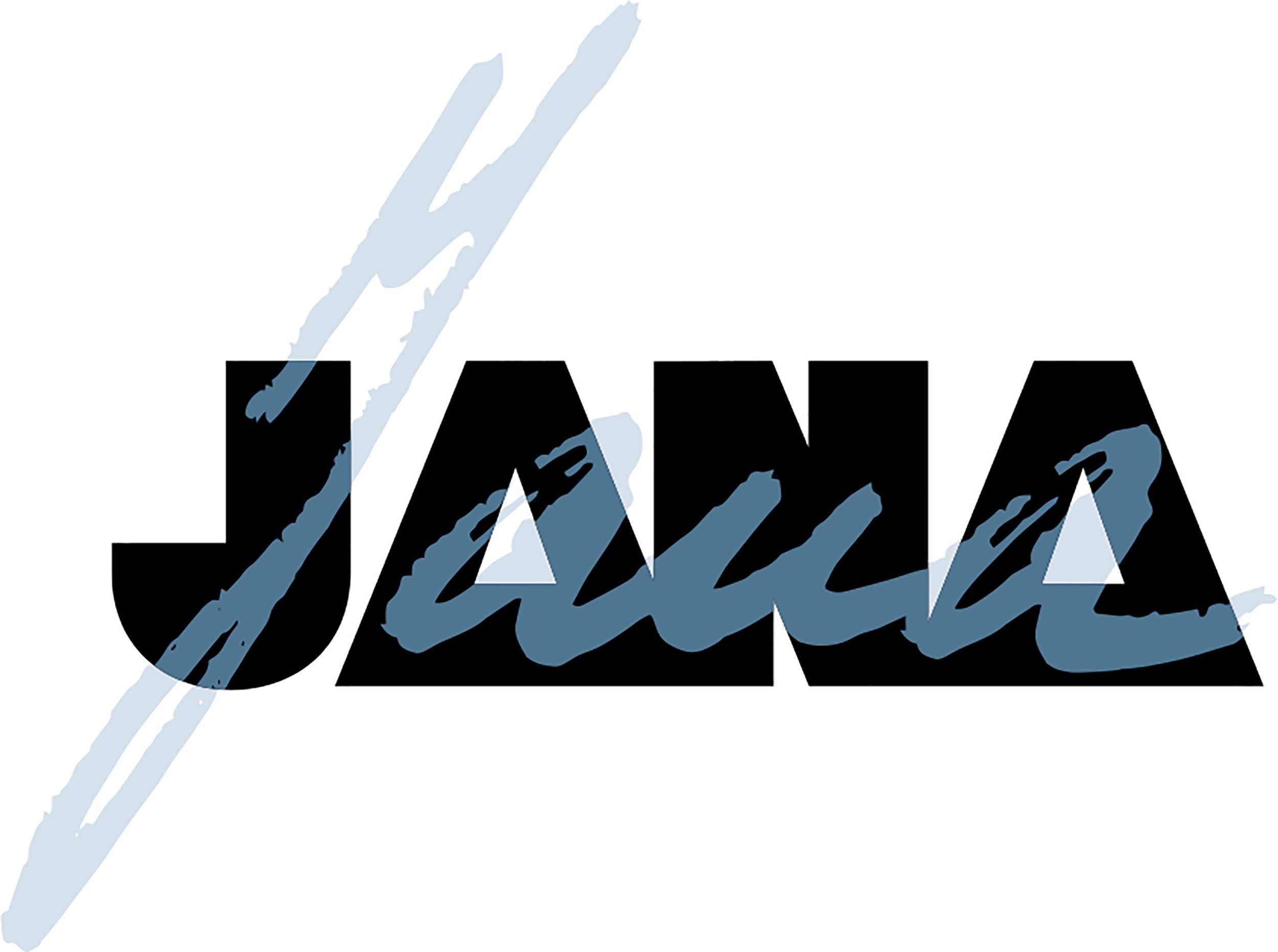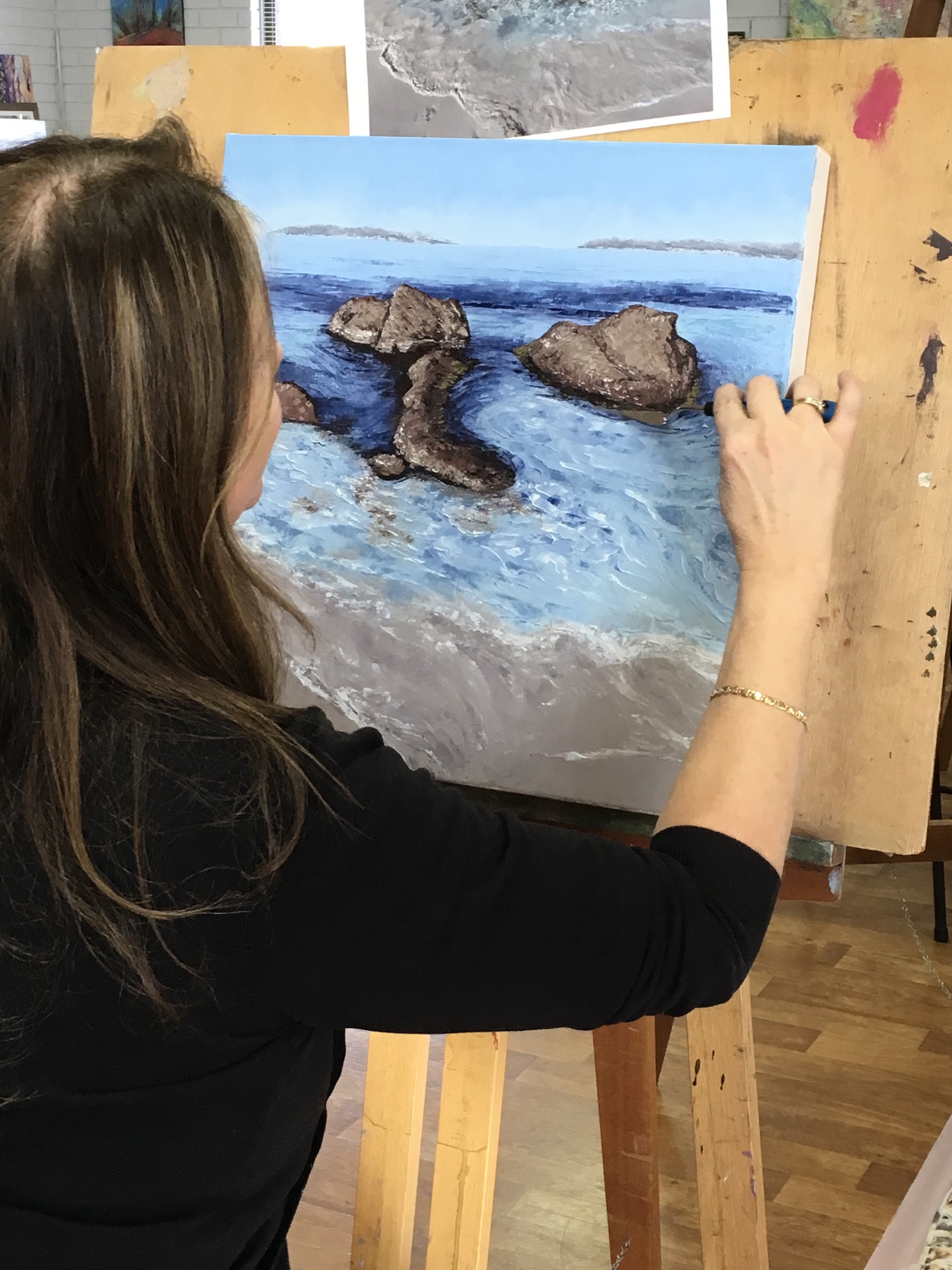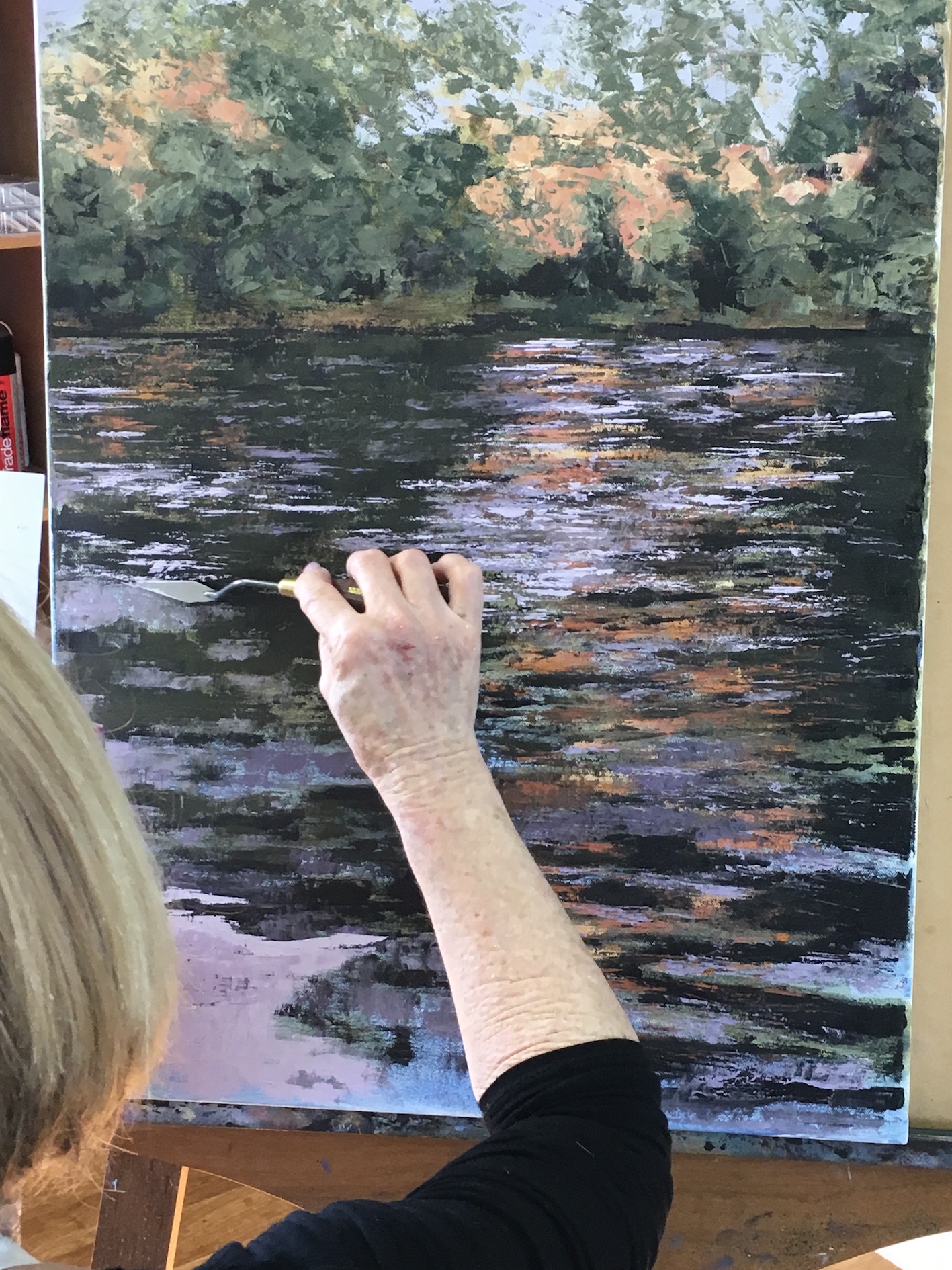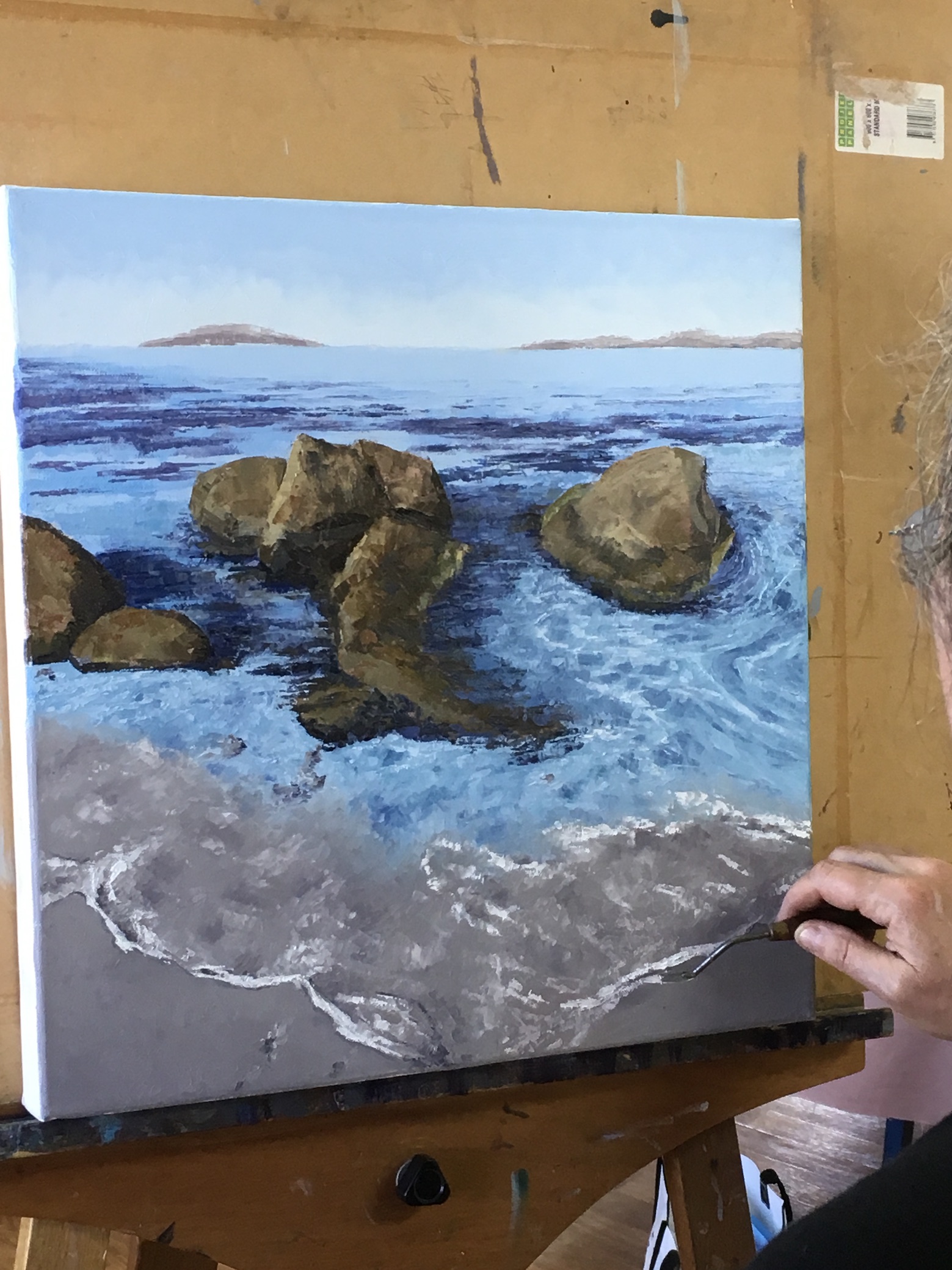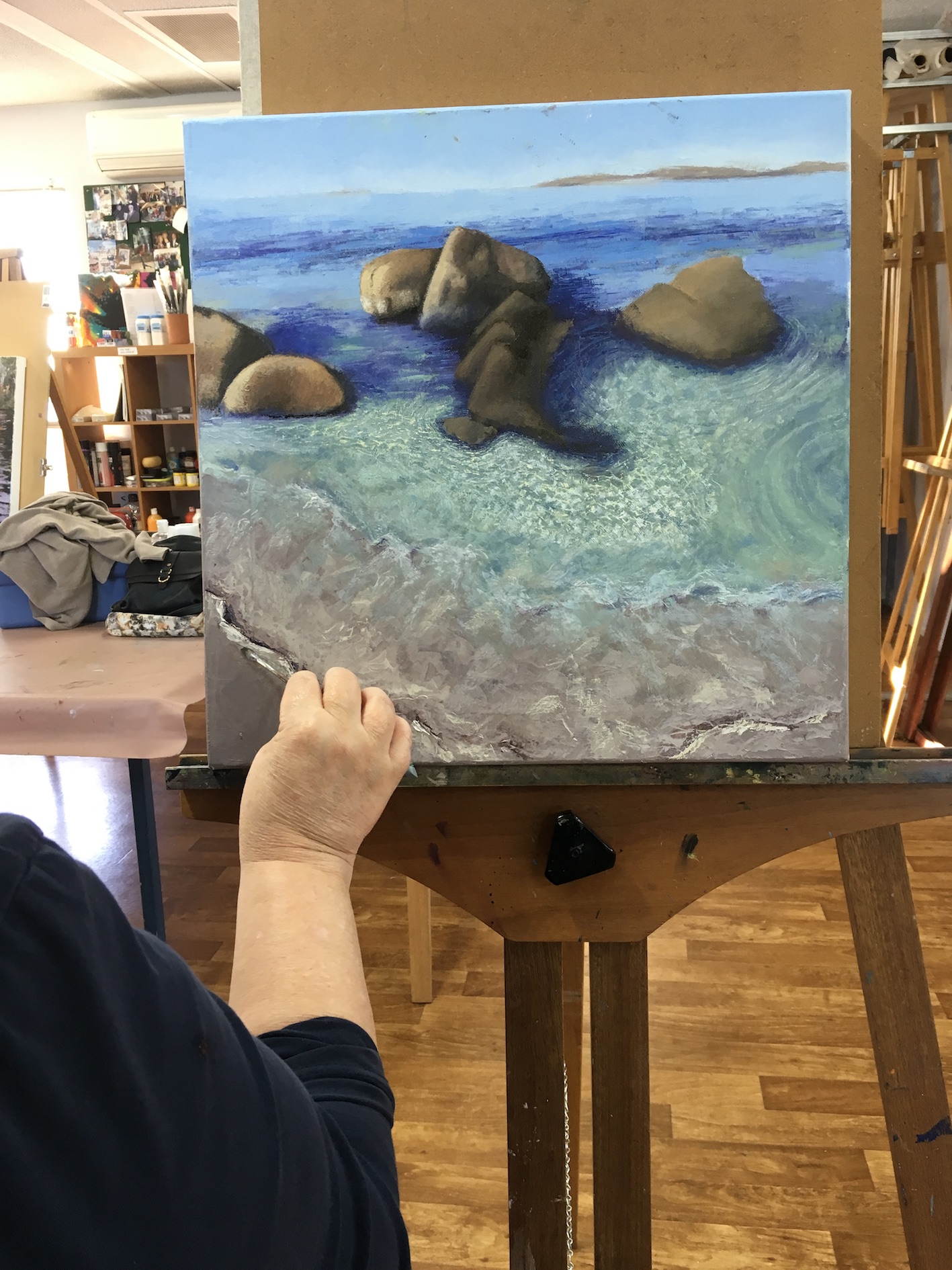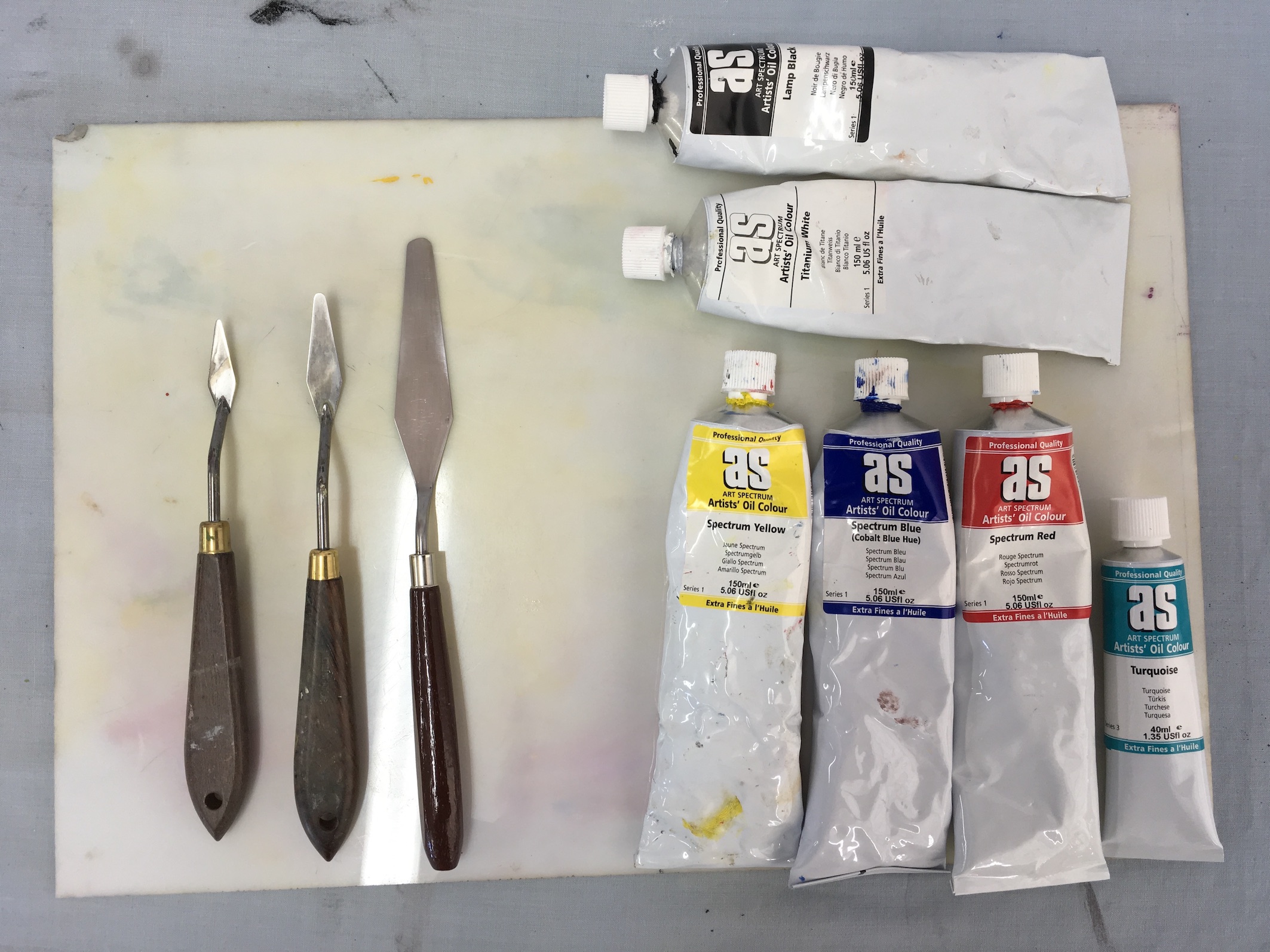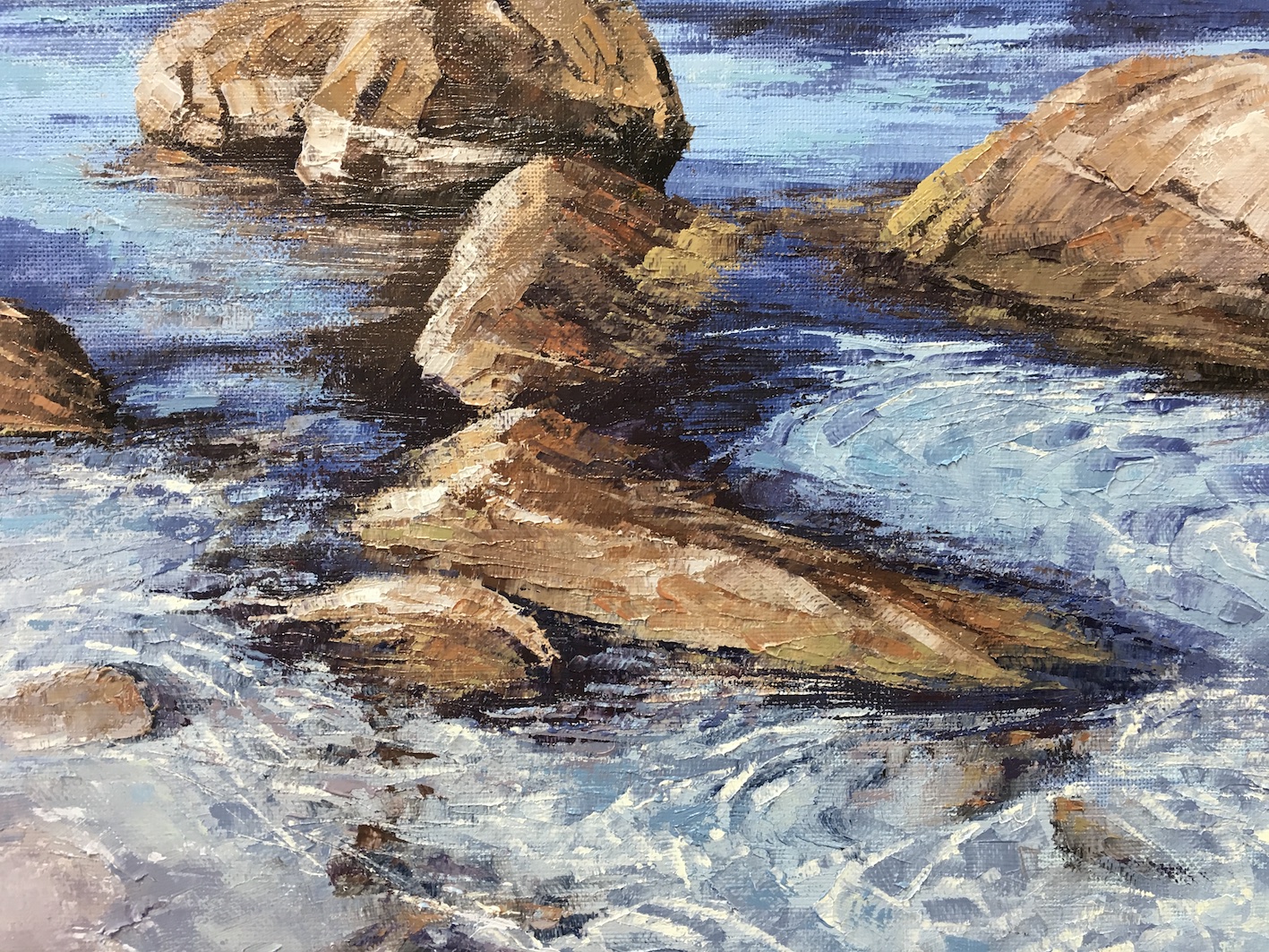All About Water And Palette Knife
My seascape with palette knife 4 week course is now finished and I was very impressed with all the participants, several of them even completed the painting. After all, it is only 12 hours and that is not much if you are learning and listening to the instructions.
I did promised to summarise all of the information into this blog, so here it is. First lets take a look at some of the works, so you can see for yourself just how good they are!
PREPARATION OF CANVAS:
Prepare your canvas with 2 coats of gesso using a small form roller.
Dilute the gesso with water approximately 70% gesso to 30% water.
DRAWING AND UNDERPAINTING:
Establish the horizon (top of the ocean), shapes of the rocks and few lines where the water changes colours.
No details necessary.
STARTING WITH PALETTE KNIFE:
You will need two palette knifes; large flat one for mixing colours on flat nonporous surface and smaller palette knife for painting. Size of the palette knife depends on the size of the canvas.
Using the brush, under paint in three colours: Mid-tone blue for ocean and sky, mid-tone brown for rocks and mid-tone colour for sand. Use the colour very thinly, either acrylic or oil are suitable.
I do encourage every student to work with the primary colours first and learn to understand what and how to mix different hues before buying all the other colours. In saying that, there are some hues that are hard to mix from primary colours and the ocean hues come into this category. On the photo you can see a tube of turquoise colour and we did use a little bit with primary blue and white.
Working on top of under painting saves time for several reasons. Firstly you will know if your composition is working, secondly the underlying colours support your topcoat and lastly you already know where everything is and it is much faster. It is like having a map to lead you to your final destination.
Using a palette knife for the first time may feel awkward but with practice it is much faster than brush, it gives the work more energy, texture and the colours are crisper. To create wavy, oval and circular shapes is difficult. The shapes are painted with side of the palette knife edge in short strokes. You can only use one edge at the time and I recommend not using the blade flat against the canvas. It doesn’t leave attractive finish.
Don’t try to finish the edges of objects perfectly; the work will look more natural and interesting.
Remember to keep the texture and colours to your advantage, creating the right spatial perspective. Duller colours into the distance and brighter/purer colours and texture into areas where you like to bring attention of viewer.
Finish as much as you can in one layer, working wet into wet. It is difficult to work over dry texture.
Let the work dry properly before you varnish. It may take several months before it is completely dry.
